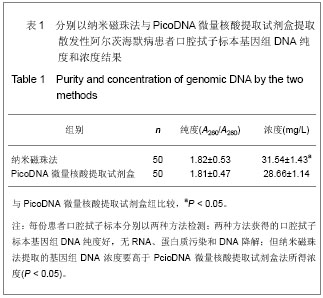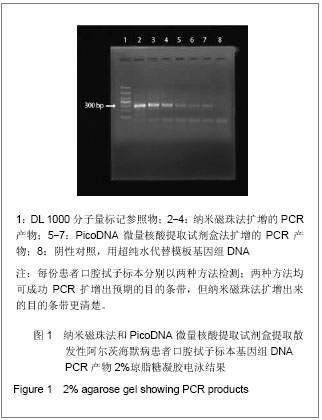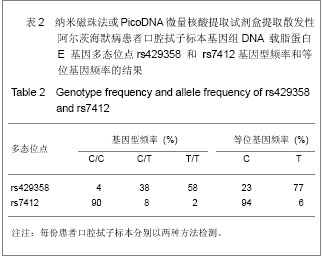| [1] Lauderback CM,Kanski J,Hackett JM,et al.Apolipoprotein E modulates Alzheimer's Abeta(1-42)-induced oxidative damage to synaptosomes in an allele-specific manner.Brain Res.2002;924(1):90-97.
[2] Raffai RL,Dong LM,Farese RV Jr,et al.Introduction of human apolipoprotein E4 "domain interaction" into mouse apolipoprotein E. Proc Natl Acad Sci U S A. 2001;98(20): 11587-11591.
[3] Li L,Thompson PA,Kitchens RL.Infection induces a positive acute phase apolipoprotein E response from a negative acute phase gene: a role of hepatic LDL receptors. J Lipid Res. 2008; 49(8):1782-1793.
[4] Laffont I,Takahashi M,Shibukawa Y,et al.Apolipoprotein E activates Akt pathway in neuron-2a in an isoform-specific manner. Biochem Biophys Res Commun. 2002;292(1):83-87.
[5] Huang Y.Aβ-independent roles of apolipoprotein E4 in the pathogenesis of Alzheimer’s disease. Trends Mol Med.2010; 16(6): 287-294.
[6] Luchsinger JA,Mayeux R.Cardiovascular risk factors and Alzheimer’s disease. Curr Atheroscler Rep.2004;6(4):261-266.
[7] Lahiri DK.Apolipoprotein E as a target for developing new therapeutics for Alzheimer's disease based on studies from protein, RNA, and regulatory region of the gene.J Mol Neurosci. 2004;23(3):225-233.
[8] Mahley RW,Weisgraber KH,Huang Y.Apolipoprotein E4: a causative factor and therapeutic target in neuropathology, including Alzheimer's disease. Proc Natl Acad Sci U S A.2006; 103(15):5644-5651.
[9] Kline A.Apolipoprotein E,amyloid-ß clearance and therapeutic opportunities in Alzheimer's disease.Alzheimers Res Ther. 2012; 4(4):32.
[10] Ferri CP,Prince M,Brayne C,et al. Global prevalence of dementia :a Delphi consensus study.Lancet.2005; 366(9503): 2112-2117.
[11] Lasser RA,Dukoff R,Levy J,et al. Apolipoprotein E epsilon 4 allele in association with global cognitive performance and CSF markers in Alzheimer's disease. Int J Geriatr Psychiatry. 1998;13(11):767-774.
[12] Ewers M,Zhong Z,Bürger K,et al.Increased CSF-BACE 1 activity is associated with ApoE-epsilon 4 genotype in subjects with mild cognitive impairment and Alzheimer's disease.Brain.2008;131(Pt 5):1252-1258.
[13] Kim J,Basak J,Holtzman DM.The Role of Apolipoprotein E in Alzheimer’s Disease. Neuron.2009;63(3):287-303.
[14] Lahiri DK,Schnabel B. DNA isolation by a rapid method from human blood samples: effects of MgCl2,EDTA, storage time, and temperature on DNA yield and quality. Biochem Genet. 1993;31(7-8):321-328.
[15] Maloney B,Ray B,Hayden E,et al.Development and validation of the high-quality ‘Rapid Method for Swab’ (RMS) to genotype the HTTLPR serotonin transporter (SLC6A4) promoter polymorphism.Psychiatr Genet. 2009;19(2):72-82.
[16] Ilveskoski E,Lehtimäki T,Erkinjuntti T,et al.Rapid apolipoprotein E genotyping from mailed buccal swabs.J Neurosci Meth.1998;79(1):5-8.
[17] Walker AH,Najarian D,White DL,et al.Collection of genomic DNA by buccal swabs for polymerase chain reaction-based biomarker assays. Environ Health Perspect.1999;107 (7): 517-520.
[18] Rogers NL,Cole SA,Lan HC,et al.New saliva DNA collection method compared to buccal cell collection techniques for epidemiological studies. Am J Hum Biol 2007;19(3):319-326.
[19] Andrisin TE,Humma LM,Johnson JA.Collection of genomic DNA by the noninvasive mouthwash method for use in pharmacogenetic studies.Pharmacotherapy. 2002;22(8): 954-960.
[20] Rusanen P,Siikala E,Uittamo J,et al.A novel method for sampling the microbiota from the oral mucosa.Clin Oral Investig.2009;13(2):243-246.
[21] Badulli C,Sbarsi I,Di Giorgio D,et al.A new approach to safely type for HLA the HIV infected people eligible to abacavir therapy: saliva or buccal swab as reliable DNA sources.Clin Chim Acta.2011;412(21-22):1995-1998.
[22] McKhann G,Drachman D,Folstein M,et al.Clinical diagnosis of Alzheimer’s disease: report of the NINCDS-ADRDA Work Group under the auspices of Department of Health and Human Services Task Force on Alzheimer’s Disease. Neurology. 1984;34(7) :939-944.
[23] Jack CR Jr,Barkhof F,Bernstein MA,et al.Steps to standardization and validation of hippocampal volumetry as a biomarker in clinical trials and diagnostic criterion for Alzheimer's disease.Alzheimers Dement. 2011;7(4):474-485.
[24] Koch W, Ehrenhaft A,Griesser K,et al.TaqMan systems for genotyping of disease-related polymorphisms present in the gene encoding apolipoprotein E. Clin Chem Lab Med.2002; 40(11):1123-1131.
[25] Wijnen PA,Drent M,van Dieijen-Visser MP,et al. Pharmacogenetic testing after a simple DNA isolation method on buccal swab samples.Pharmacogenomics. 2009; 10(6):983-987.
[26] Le Marchand L,Lum-Jones A,Saltzman B,et al.Feasibility of collecting buccal cell DNA by mail in a cohort study. Cancer Epidemiol Biomarkers Prev. 2001;10(6):701-703.
[27] Drobnik A,Judd C,Banach D,et al.Public health implications of rapid hepatitis C screening with an oral swab for community-based organizations serving high-risk populations.Am J Public Health.2011;101(11):2151-2155.
[28] Wijnen PA,Op den Buijsch RA,Cheung SC,et al.Genotyping with a dried blood spot method: a useful technique for application in pharmacogenetics. Clin Chim Acta.2008; 388(1-2):189-191.
[29] Gavriel G,Modi N,Stanier P,et al.Neonatal buccal cell collection for DNA analysis. Arch Dis Child Fetal Neonatal Ed.2005;90(2):F187.
[30] Mitsouras K,Faulhaber EA.Saliva as an alternative source of high yield canine genomic DNA for genotyping studies.BMC Res Notes. 2009;2:219.
[31] London SJ,Xia J,Lehman TA,et al.Collection of buccal cell DNA in seventh- grade children using water and a toothbrush. Cancer Epidemiol Biomarkers Prev.2001;10(11):1227-1230.
[32] Ng DP,Koh D,Choo S,et al.Saliva as a viable alternative source of human genomic DNA in genetic epidemiology.Clin Chim Acta.2006;367(1-2):81-85.
[33] Rogers NL,Cole SA,Lan HC,et al. New saliva DNA collection method compared to buccal cell collection techniques for epidemiological studies. Am J Hum Biol. 2007;19(3):319-326.
[34] Ng DP,Koh D,Choo SG,et al.Effect of storage conditions on the extraction of PCR-quality genomic DNA from saliva. Clin Chim Acta. 2004 ;343(1-2):191-194.
[35] Laskowitz DT,Thekdi AD,Thekdi SD,et al.Downregulation of microglial activation by apolipoprotein E and apoE-mimetic peptides.Exp Neurol. 2001;167(1):74-85.
[36] Brown CM,Wright E,Colton CA,et al.Apolipoprotein E isoform mediated regulation of nitric oxide release.Free Radic Biol Med. 2002;32(11):1071-1075.
[37] Agosta F,Vossel KA,Miller BL,et al.Apolipoprotein E epsilon4 is associated with disease-specific effects on brain atrophy in Alzheimer's disease and frontotemporal dementia.Proc Natl Acad Sci U S A. 2009;106(6):2018-2022.
[38] Thal DR,Rüb U,Orantes M,et al.Phases of A beta-deposition in the human brain and its relevance for the development of AD.Neurology. 2002;58(12):1791-800.
[39] Drzezga A,Grimmer T,Henriksen G,et al.Effect of APOE genotype on amyloid plaque load and gray matter volume in Alzheimer disease.Neurology. 2009;72(17):1487-1494.
[40] Solomon A,Kivipelto M,Wolozin B,et al.Midlife serum cholesterol and increased risk of Alzheimer's and vascular dementia three decades later. Dement Geriatr Cogn Disord. 2009;28(1):75-80.
[41] Wolozin B,Manger J,Bryant R,et al.Re-assessing the relationship between cholesterol, statins and Alzheimer's disease.Acta Neurol Scand Suppl. 2006;185:63-70.
[42] Bu G. Apolipoprotein E and its receptors in Alzheimer's disease: pathways, pathogenesis and therapy.Nat Rev Neurosci.2009;10(5):333-544.
[43] Prince JA,Zetterberg H,Andreasen N,et al.APOE epsilon4 allele is associated with reduced cerebrospinal fluid levels of Abeta42.Neurology. 2004;62(11):2116-2118.
[44] Lahiri DK,Sambamurti K,Bennett DA.Apolipoprotein gene and its interaction with the environmentally driven risk factors: molecular, genetic and epidemiological studies of Alzheimer's disease.Neurobiol Aging 2004;25(5):651-660.
[45] Parker GR,Cathcart HM,Huang R,et al.Apolipoprotein gene E4 allele promoter polymorphisms as risk factors for Alzheimer's disease.Psychiatr Genet. 2005;15(4):271-275.
[46] Vitek MP,Brown CM,Colton CA.APOE genotype-specific differences in the innate immune response.Neurobiol Aging. 2009;30(9):1350-1360.
[47] Khachaturian AS,Corcoran CD,Mayer LS,et al.Apolipoprotein E epsilon4 count affects age at onset of Alzheimer disease, but not lifetime susceptibility: The Cache County Study.Arch Gen Psychiatry.2004;61(5):518-524.
[48] Heun R,Gühne U,Luck T,et al.Apolipoprotein E allele 4 is not a sufficient or a necessary predictor of the development of Mild Cognitive Impairment. Eur Psychiatry.2010; 25(1):15-18.
[49] Wang G,Su X.A novel technology for the detection, enrichment, and separation of trace amounts of target DNA based on amino-modified fluorescent magnetic composite nanoparticles .Anal Bioanal Chem.2010;397(3):1251-1258.
[50] Shan Z,Zhou Z,Chen H,et al.PCR-ready human DNA extraction from urine samples using magnetic nanoparticles. J Chromatogr B Analyt Technol Biomed Life Sci.2012; 881-882: 63-68.
[51] Zhao X,Tapec-Dytioco R,Wang K,et al.Collection of trace amounts of DNA/mRNA molecules using genomagnetic nanocapturers.Anal Chem. 2003;75(14):3476-3483. |




.jpg)